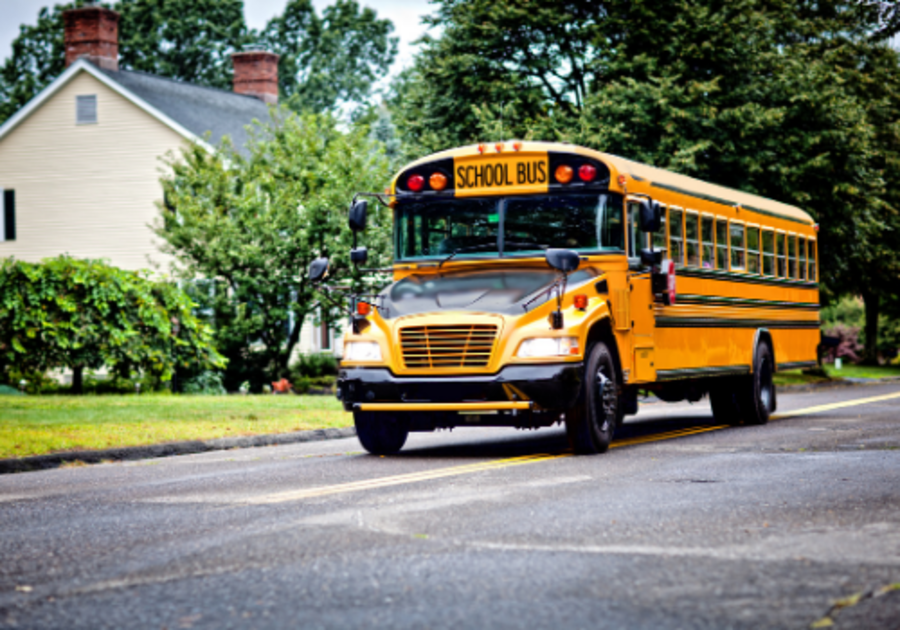| As students prepare to return to school, Chief Timothy Hanlon and the Whitman Police Department, and Chief Michael Miksch and the Hanson Police Department, would like to offer students, parents and motorists several important safety tips. |
Safety While Traveling to School
| The National Safety Council (NSC) provides the following tips for students and parents to safely get to school: |
| Walking to school: |
- Walk on the sidewalk, if one is available; when on a street with no sidewalk, walk facing the traffic
- Before you cross the street, stop and look left, right and left again to see if cars are coming
- Make eye contact with drivers before crossing and always cross streets at crosswalks or intersections
- Stay alert and avoid distracted walking. Never walk while texting. If you need to respond to a text, move out of the way of others and stop on the sidewalk. Never cross the street while using an electronic device. Do not wear earbuds while walking across the street.
| Riding a bicycle to school: |
- Ride on the right side of the road, with traffic, and in single file
- Come to a complete stop before crossing the street; walk bikes across the street
- Stay alert and avoid distracted riding
- Make sure your child always wears a properly fitted helmet and bright clothing
| Riding the bus to school: |
- Go to the bus stop with your child to teach them the proper way to get on and off the bus
- Teach your children to stand six feet (or 3 giant steps) away from the curb
- If your child must cross the street in front of the bus, teach him or her to walk on the side of the road until they are 10 feet ahead of the bus; your child and the bus driver should always be able to see each other
| Driving your child to school: |
- Stay alert and avoid distracted driving
- Obey school zone speed limits and follow your school's drop-off procedure
- Make eye contact with children who are crossing the street
Safety Tips for Motorists
| It is important that motorists be alert while driving, especially in school zones and residential neighborhoods. Children can be unpredictable and may ignore hazards and take risks. The NSC provides the follow tips for motorists: |
- Don't block the crosswalk when stopped at a red light or waiting to make a turn, forcing pedestrians to go around you; this could put them in the path of moving traffic
- In a school zone when flashers are blinking, stop and yield to pedestrians crossing the crosswalk or intersection. Always stop for a school patrol officer or crossing guard holding up a stop sign
- Take extra care to look out for children in school zones, near playgrounds and parks, and in all residential areas
- Don't honk or rev your engine to scare a pedestrian, even if you have the right of way
- Never pass a vehicle stopped for pedestrians
- If you're driving behind a bus, allow a greater following distance than if you were driving behind a car
- Never pass a bus from behind – or from either direction if you're on an undivided road – if it is stopped to load or unload children. It is illegal in all 50 states to pass a school bus that is stopped to load or unload children
- If the yellow or red lights are flashing and the stop arm is extended, traffic must stop
- The area 10 feet around a school bus is the most dangerous for children; stop far enough back to allow them space to safely enter and exit the bus
- When passing a bicyclist, proceed in the same direction slowly, and leave 3 feet between your car and the cyclist
- The most common cause of collision is a driver turning left in front of a bicyclist. Watch for bike riders turning in front of you without looking or signaling; children especially have a tendency to do this
- Watch for bikes coming from driveways or behind parked cars
| Motorists are also reminded that the Massachusetts Hands-Free Law requires drivers to stay off of all electronic devices while driving. |
Online Safety for Remote Learning
| The Whitman and Hanson Police Departments would also like to remind parents of ways they can help keep their children safe when they are online for remote learning. |




